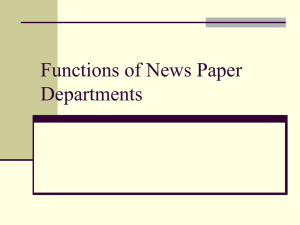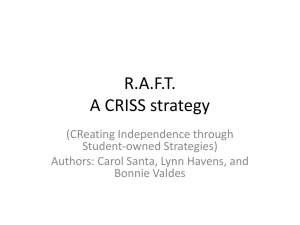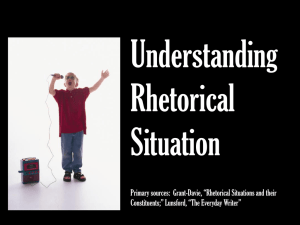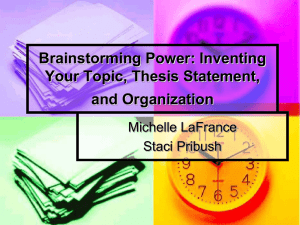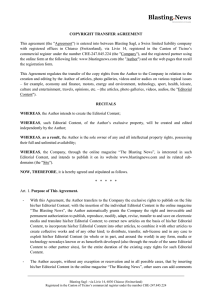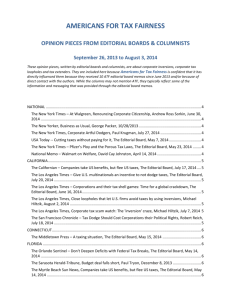Level 6 Activity 2.9 - Everett Public Schools
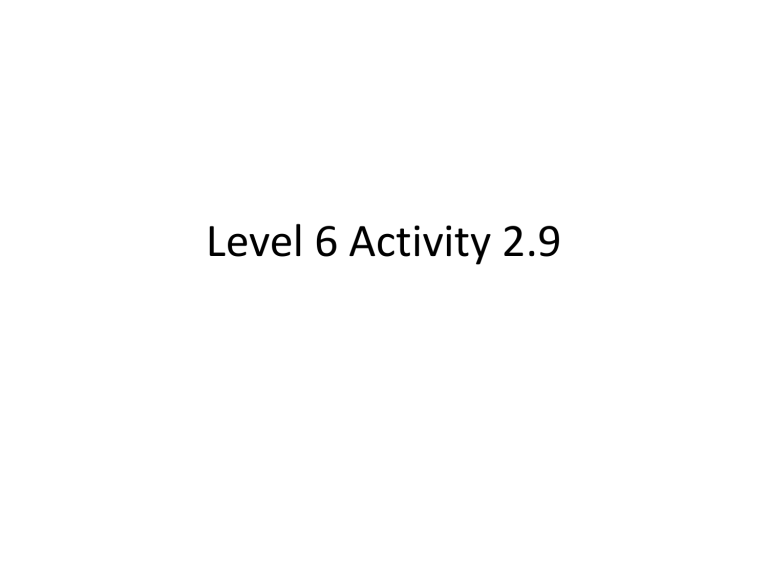
Level 6 Activity 2.9
2.9 – How to Read an Editorial
Go back to pages 128-130 and
review your notes and/or reread the article “Facebook Photos Sting
Minnesota High School Students”.
This article connects to the next article we will read in this activity.
2.9 – How to Read an Editorial
Purpose of 2.9:
• To develop techniques for actively reading an editorial text
• To examine the impact of audience and context on rhetorical choices
2.9 – How to Read an Editorial
WNB: Academic Vocab
NEWS STORY: to inform the reader about a particular and noteworthy event.
Example: “Facebook Photos Sting
Minnesota High School Students”
EDITORIAL: may also be to inform, but its main objective is to persuade.
Example: “Abolish High School Football”
2.9 – How to Read an Editorial
When reading an Editorial:
1. Examine the headline , sub-headline and related cartoon (if it exists). What will this editorial be about? What guesses or assumptions can you make about the writer’s perspective at this point?
2. Look at the writer’s name and affiliation , if given. What do you know about the writer’s background and/or personal bias at this point?
2.9 – How to Read an Editorial
When reading an Editorial:
3. Read the first two or three paragraphs very carefully. What issue is the writer discussing and what is his/her stance on the issue?
4. Once you have determined ‘stance’, stop reading for a moment or two. What is the other side of the issue? Who might think differently? Do you know any reasons that might support the opposition to the writer’s stance?
2.9 – How to Read an Editorial
When reading an Editorial:
5. Continue reading. What are two of the strongest pieces of evidence that the writer uses to support his or her side of the issue? Why are they effective?
6. Did the writer persuade you? Did the writer address/refute the main objections to the opposition? Given an example.
What did he/she not address? Why might the writer have chosen not to address this element? Fair to other side? Why?
2.9 – How to Read an Editorial
When reading an Editorial:
7. Go back through the editorial and circle words and phrases that are “slanted”.
How do these words affect your feelings about the issue? About the writer?
8. If the writer were standing right next to you now, what would you say to him or her?
2.9 – How to Read an Editorial
Pages 141-143:
1. Read the editorial “Facing
Consequences at Eden Prairie High”
(pg 142-143)
2. Now, turn back to page 141 and work to complete the editorial evaluation chart on pg 141. Use the Questions on pg 140 to guide your writing.
2.9 – How to Read an Editorial
Discussion
• Look at the article again. Which
‘slanters’ are used in this editorial?
• Do you agree with the view presented in this editorial? Or, the view presented on the same issue in the article on pages 128-130? Why?
• The Minnesota high school Facebook suspensions articles will be the focus of an editorial you will write tomorrow.
2.9 – How to Read an Editorial
WNB: QuickWrite
Title: Author’s Language
• Write a paragraph, using the topic sentence below, analyzing the author’s use of language to construct argument and target the intended audience. Cite specific examples from the text (at least THREE).
In “Facing Consequences at Eden Prairie High” from the
Minneapolis/St. Paul Star Tribune, the writer tailors the language to persuade parents, students, and the public to praise the actions of the administration.

